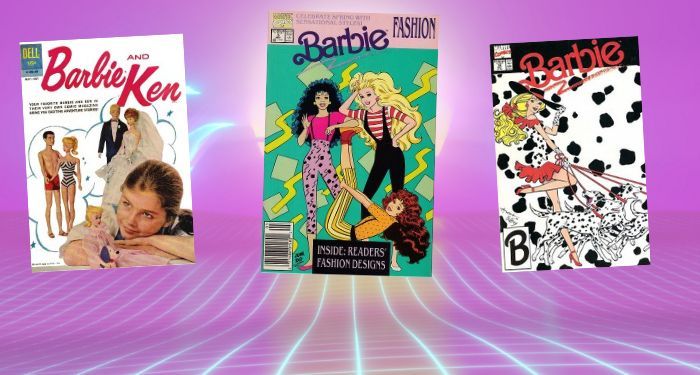
The Lackluster World of Barbie Comics
Barbie, the Greta Gerwig film starring Margot Robbie, has taken the world — and especially the internet part of the world — by storm, and it’s not even out yet. The beloved doll is seeing a pop culture resurgence, unlike anything since Aqua’s 1997 iconic hit “Barbie World.” (Yes, the movie will feature a cover.)
Now of course all devoted Barbieheads know that the one and only Barbara Millicent Roberts has appeared in countless multimedia properties, including hours upon hours of animated films and shows (do yourself a favor and go watch all of the web series Barbie: Life in the Dreamhouse immediately; you’re welcome), books, and video games, but did you know she has also starred in a number of comics? I knew Barbie comics existed, but it wasn’t until Barbie Fever hit that I decided to take a deep dive and see how life in plastic translates to the comic book page.
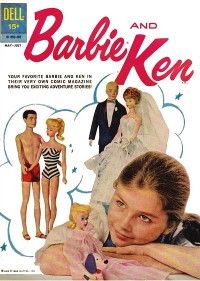
The earliest Barbie comic was a five-issue series called Barbie and Ken that was published by Dell from 1962-1963. There’s a distinct lack of imagination on display here: the covers feature photos of the dolls rather than drawings, and the stories revolve around a Barbie fan club made up of little girls who meet to discuss what it would be like to meet Barbie in various scenarios? For some reason? Complete with rigid gender roles, of course!
For example, in the first issue, one girl talks about going on a flight with Ken as a pilot and Barbie as a flight attendant, while another attends a ballet where Barbie and Ken are the principal dancers. I couldn’t help but notice that the comic version of Pilot Ken has two legs, unlike my own Pilot Ken after my neighbor’s little brother threw him down the stairs, highlighting this comic’s shocking lack of adherence to canon.
No, but seriously, all of the stories are extremely dull, and I sincerely hope the children of the ’60s were having more fun than this comic suggests. At least the little girl who visits Nurse (sigh) Barbie at the hospital gets to watch Doctor (SIGH) Ken remove another child’s appendix, which fits in with the sort of gruesome play most girls of my generation enacted with their Barbies.
![Three panels from Barbie and Ken. Barbie, Ken, and a little girl are in the hospital of a hallway. Barbie and Ken are wearing surgical scrubs.
Barbie: Ken is on his way to becoming the most brilliant young surgeon in the hospital!
Ken: Come now, girls. The important thing is that Billy will be perfect. We caught those appendix just in time! [sic]
Panel 2:
Little Girl: You mean you caught them! After all, you're the doctor!
Panel 3:
Ken: Yes, but a doctor is only as good as his best nurse...and I've got the best nurse of all!](https://s2982.pcdn.co/wp-content/uploads/2023/06/barbie-and-ken-2.jpeg.optimal.jpeg)
A few decades later, the Barbie license passed to Marvel, who launched two ongoing series in 1991: Barbie, which ran for 63 issues, and Barbie: Fashion, which ran for 53 issues. Those are pretty impressive runs, especially for comics starring a female character, and with a far higher percentage of female creators on their rosters than is typical for Marvel. (According to the Grand Comics Database, no creators stuck around on these books for too long, but almost half were women.) In fact, I’m fairly certain that Barbie held down her runs for longer than any Marvel heroine besides Patsy Walker (124 issues) and Millie the Model (a glorious 207 issues). That’s…actually more of a damning indictment of Marvel than a coup for Barbie, but let’s move on.
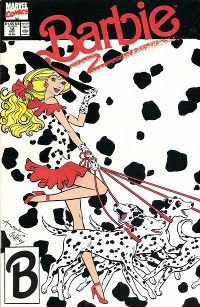
Jokes about Barbie beating Thanos aside (she could, and easily), Marvel publishing so many Barbie comics at first seems incongruous. But again, Marvel’s longest-running comic starring a woman is Millie the Model, and that doesn’t include all her various spinoffs. They’d had similar multibook success with Patsy Walker, who is best known as the superheroine Hellcat these days, but started out as a teen comedy heroine in the vein of Archie — arguably a junior version of Millie’s hijinks. In fact, Marvel had a whole bunch of light comedy books for girls outside of their superhero universe that also included Kathy and Wendy Parker, although admittedly most of these characters faded away in the ’70s, if not earlier. (Or, in Patsy’s case, developed mystical psychic cat powers. Which I’m sure Barbie also has.)
But maybe someone at Mattel fondly remembered Millie from their own childhood, or maybe they were just impressed with Marvel’s astronomically high sales during the boom of the early ’90s. Either way, Marvel got the license.
And, well…
I’m sorry, readers. I thought when I started the research for this article that I’d be able to recount hilariously dated Barbie storylines from the days of crimped hair and New Kids on the Block, but these comics are boring. Barbie and Ken and Skipper and the rest of the gang star in fashion shows, go shopping, and attend dances. They learn excruciatingly gentle lessons about friendship and self-confidence. They star in more fashion shows. And they make relentlessly terrible puns the whole time, which is about as much humor as we get.
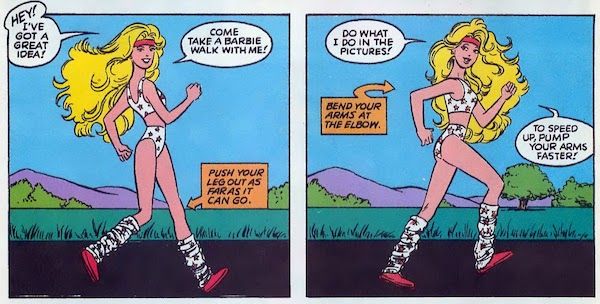
Fashion comics for little girls can do better. Marvel’s fashion comics for little girls have done better. Now, don’t get me wrong — Millie the Model was not exactly leaping out of helicarriers to fight Hydra, as awesome as that would have been. But Millie and her supporting cast at least had personalities. Most importantly, Millie had Chili Storm, Millie’s frenemy/rival, who sometimes made trouble for Millie and sometimes got into hijinks alongside her, but could always be counted on to inject some entertaining conflict into the story. (Archie’s Veronica Lodge and Reggie Mantle are probably the best known examples of this trope.)
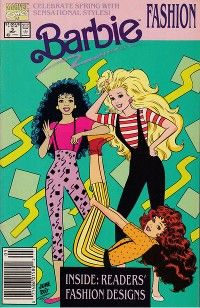
But every character in Marvel’s licensed Barbie (TM) comics is a licensed Barbie (TM) doll and so they all have to be blandly inoffensive. You can’t have Midge sales dropping because Midge was catty to Barbie in Barbie: Fashion #27! I can’t be sure, but I suspect we can blame Mattel protecting their brand for this blandness rather than Marvel’s creators being unimaginative. Once again, I think this is a misread of little girl behavior — I bet a ton of kids would love to have “the Mean Doll.” (Not to shill for Barbie: Life in the Dreamhouse again, but troublemaking twins Raquelle and Ryan are by far the best characters on the show.)
Marvel published their last Barbie comic in 1996, and since then, there have been no monthly comics starring her, though Papercutz has put out several Barbie graphic novels in recent years. With kids’ comics experiencing such a boom moment, I’d love to see a new serialized Barbie comic hitting the stands — or possibly Webtoon, which seems tailor-made for something like this. And this time around, hopefully, they jazz things up a bit. Mattel, and anyone in a position to pitch to them, I hope you’re taking notes!
In the meantime, I’ll see you at the movies.








